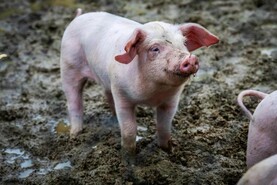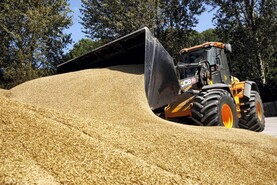Not too long ago, pig prices looked good and were thought to be going in the right direction. But, in a matter of months, this has all changed.
There are a number of reasons for this, some local, some more international.
Locally, the slaughter capacity (due to labour shortages) in Northern Ireland became a key factor, resulting in pig sales to northern processors being pushed back.
African Swine Fever (ASF) problems in wild boar in Germany has also excluded them from the Chinese market
Where normally 11,000 pigs per week were going to the North, this has reduced by almost 3,000 per week in recent months.
At European level, reduced slaughter capacity (caused by Covid-related labour shortages) in Germany resulted in a backlog of pigs on farms there, which also served to drive down pig prices. African Swine Fever (ASF) problems in wild boar in Germany has also excluded them from the Chinese market, resulting in greater numbers of German pigs on the “local” EU market, again driving down prices.
Continued issues with ASF in China has seen a glut of pigs being sold earlier to receive a reasonable market value, rather than losing those pigs to enforced culling. This has driven down Chinese prices.
As a result, many large producers who had invested heavily in their farms cannot make their repayments and are being forced to destock their farms. This, in turn, adds to the local Chinese supply of pigs and China is now importing less pigmeat than heretofore.
At the same time, increasing grain prices have added more pressure to the system
All of this has driven down pig prices. In the past 12 months, pig price in Ireland has dropped 13c (from €1.63 to €1.50) per kg deadweight. In fact, if you look at the June to October period, it has dropped 22c per kg (from €1.72 in June).
At the same time, increasing grain prices have added more pressure to the system. Over the past 12 months, composite feed prices have increased almost €40/t, which, when combined with the flagging pig price, have resulted in a drop in Margin Over Feed of 20c per kg deadweight, or losses of almost €18 per pig.
The uncertainty of when any positive change may come makes for a very concerning period for Irish producers. It is critically important to keep focused on feed costs and look at ways to reduce them on-farm.
Take stock and see where efficiencies can be improved on to claw back some of this deficit.






 This is a subscriber-only article
This is a subscriber-only article










SHARING OPTIONS: